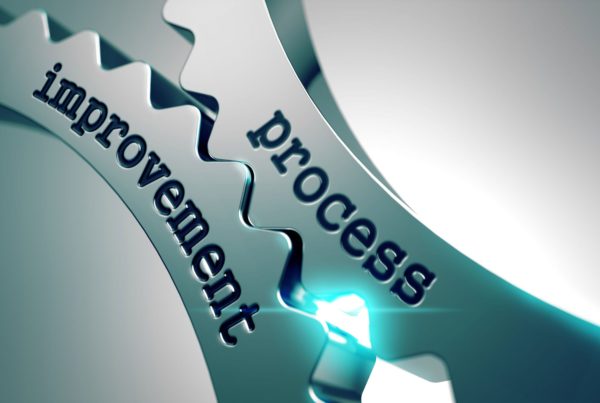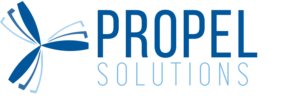The Theory of Constraints (ToC) is a great place to start practicing continuous improvement and can be applied to any organization and practices in any business environment.
The Theory of Constraints (ToC) Philosophy
The Theory of Constraints (ToC) is a management philosophy that can be applied to any work task or activity. This simple theory states that processes and systems are only constrained by a small number of bottlenecks and focusing on these constraints will help organizations reach their goals faster.
Eliyahu M. Goldratt has introduced The Theory of Constraints in his 1984 book, The Goal. He described that the organizations are measured on three components:
| Throughput |
| Operational Expense |
| Inventory |
However, the ToC uses these three components to understand the sales process in a manufacturing environment, but Goldratt also highlights that these three components can be used in any type of environment to guide financial decision making.
Applying the Theory of Constraints (ToC) components to Non-Manufacturing
Although the Theory of Constraints had been developed with manufacturing processes in mind, still it can be applied to any process or system within an organization. Think about the three components in an administrative or service environment:
| Measurement Component | Manufacturing Application | Non-Manufacturing application |
| Throughput | The rate at which the system generates money through sales. | The rate at which the organization generates money through sales. That is to say, the rate of revenue has been earned |
| Operational Expense | The money that organizations spend to turn inventory into throughput | the money that the organization spends to turn inputs: ideas/research/expertise into throughput, or output: reports, campaigns, sales |
| Inventory | The money that the system has invested in purchasing things which it intends to sell | The money that the organization spends to generate revenue (salaries, marketing, consulting services, etc.) |
5 Steps to Alleviate Constraints (and Improve Throughput)
Goldratt has explained that increasing flow through the constraint (bottleneck) is the only way that throughput can be increased. Therefore, the following steps can identify how to improve flow through a process or system constraint:
1. Identify the constraint
The constraint could come from a variety of sources, depending on the organization and the process:
- Firstly, resources (people, equipment) can be a constraint. Where there is insufficient capacity to process work at an ideal rate. In Lean thinking, we would evaluate how to reduce waste to make better use of our current resources.
- Secondly, the market can be a constraint. For example, economic factors such as increased supply in the market or reduced demand for your product are broad examples of market constraints. In these situations, you will want to consider new applications for your products, your equipment, or your people. Be innovative in leverage marketing changes.
- Thirdly, policy constraints have occurred when a blanket policy is applied to all processes, regardless of circumstance. Policy constraints are often a problem when it comes to hiring within an organization (ie: entry-level employees go through the same rigorous and long processes as higher-skilled employees) which creates waste in time, resources, and possibly lost opportunities when individuals cannot wait-out the long process.
- Lastly, the dummy constraints are the resource constraints that can easily be broken or changed for instant improvements. An example of a dummy constraint in an administrative environment would be waiting for a certain day of the week, or day of the month to approve a certain task or project. In addition, approvals can be a significant bottleneck, and although interrupting weekly tasks to make approvals on the fly may cost someone their time (and therefore cost the company money) to handle, it allows for tasks to flow through at a greater rate.
2. Exploit the constraint
After identifying the constraint(s), you will want to exploit it. The constraint should always be working at full capacity. If the constraint is a specialized task, consider how you can remove non-specialized tasks from the individual/department to improve throughput.
3. Pace other processes to the constraint
A common symptom of a constraint is the buildup of inventory and work-in-progress (WIP). This is an indicator that there is a constraint where on one side of the process, there is a buildup of work and on the other side of the process there is excess capacity. Some ways to pace the other processes around the bottleneck include Moving steps from one side or the other if possible, reducing the work in process and instead focus on managing the constraint, cross-train others to contribute to the constraint tasks, etc.
4. Elevate the constraint
If all non-investment improvements have been made to improve capacity at the constraint, consider what options are available to invest in the constraint: Investing may be cross-training employees to execute specialized work, adding additional systems to increase capacity at the bottleneck, increasing resources, such as people, on the constraint, etc. Most importantly, keep in mind Lean practices whereby you want to reduce wastes before increasing resources. Likely there are many innovative ways to improve capacity at the constraint without investing any additional resources.
5. Repeat
Once you have increased capacity and relieved a constraint for one process or system, repeat the steps again to find new constraints. Therefore, reorganize, reevaluate, reconsider all the steps and processes throughout the organization until you have created the desired flow.
Takeaways
Goldratt’s ToC enables organizations to develop a continuous improvement mindset. In conclusion, the steps, and theory is relatively simple and can be applied to any process, regardless of the industry or environment. Thus, the ToC process is a great step toward a continuous improvement mindset and can be shared by an organization that is looking to reach their goals faster.
Works cited:
Goldratt, Eliyahu M. Essays on the Theory of Constraints. [Great Barrington, MA]: North River Press
Questions? Contact Us
If you want to learn how to instill a culture of Continuous Improvement within your organization contact us at Propel Solutions today. We specialize in creating high performing teams and have a proven track record of powerful results.
Propel Solutions
- 📍 789 W. Pender Street, Vancouver, BC, Canada
- 📞 604-346-5185








